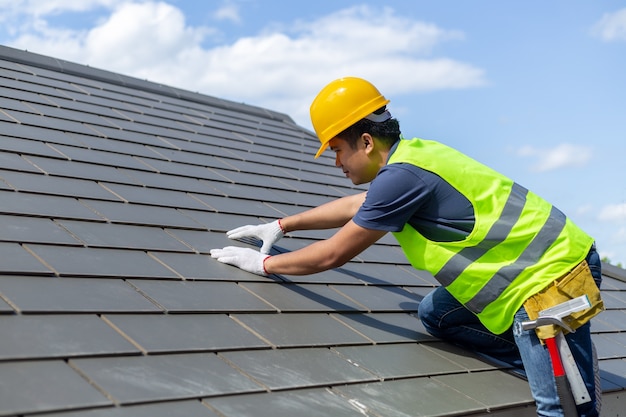Spring cleaning — a revitalizing time of year when drawers are emptied, closets are purged, and those hard-to-reach cobwebs are finally taken care of. But amid all that indoor cleaning, don’t forget your home’s exterior, especially the roof.
Unfortunately, roofs take the brunt of winter storm damage. Once the weather is more moderate in spring, giving your roof an inspection and a cleaning is incredibly important for its integrity and to maximize its longevity.
Here are some areas to keep in mind when you check your roof this spring.
Inspect for Damaged or Disappeared Shingles
Often high winds will either uproot shingles completely or set them askew. Broken or lost shingles can allow external elements into the home, like rain and snow — neither of which is ideal for your home’s interior.
Getting damage like this taken care of sooner than later is essential. While it’s tempting to try to tackle repairs yourself, doing so can be dangerous and, for the most part, ineffective. For all roof repairs, it’s recommended that you hire professionals. Professionals have the right tools and know-how to make sure the problem is solved quickly and successfully before the issue worsens, which may result in greater damage.
Clear off Debris
The roof often accumulates a build-up of debris from neighbouring trees: small branches, leaves, and pine needles. This is especially true during the winter when heavy winds and an accumulation of weighty snow can displace greenery.
Allowing debris to sit on the roof for extended periods can contribute to the growth of mold and mildew; furthermore, debris can act as a blockage— trapping water and snow in place so that it eventually starts to corrupt and damage the roof tiles.
If it’s safe to do so, use a rake or soft brush to gently pull debris towards you, or use a leaf blower to move the debris along.
Check Eaves and Downspouts
Eaves play an essential role in moving water away from the building. In addition to checking your roof for debris, it’s equally important to check your eaves and downspouts. Left unchecked, an accumulation of debris can cause water to backup in downspouts and eaves. This can be hazardous for your home.
Allowing rainwater to backup will see it overflowing down the home’s exterior and pooling around its foundation. In extreme instances, this can cause serious damage by seeping into finished basements or damaging the integrity of your home’s foundation.
For single-storey homes, it’s best to clean eaves while wearing gloves with a trowel and bucket. Always do this with an assistant spotting the ladder. For those uneasy on ladders or those who own a multi-storey property, seeking professional help will keep everyone safe and guarantee the job is done right.
Look Inside
To ensure no holes have been created by fallen branches, it’s worth checking in your attic for any water damage. If you don’t have an attic, check the ceilings of the upper floors for any signs of dampness. Should you spot watermarks, it’s imperative you connect with professionals before the issue deteriorates.
Take Away
With some pre-emptive steps like cleaning your roof and gutters in the springtime and seeking professional help in instances of damage, you’re setting yourself up for a healthy roof that fulfills its maximum lifespan.




